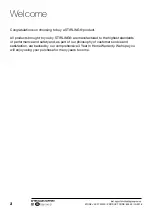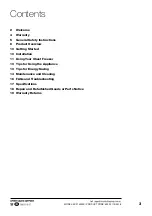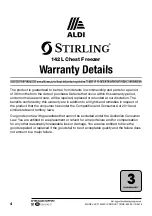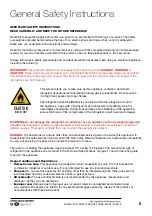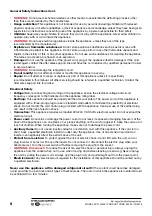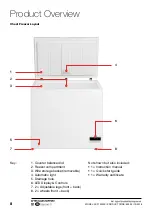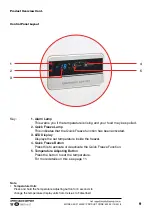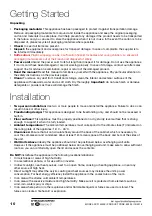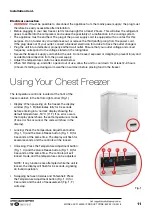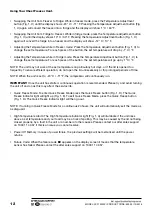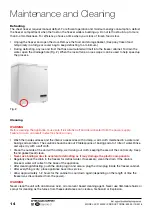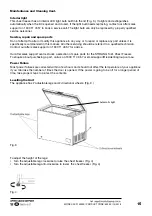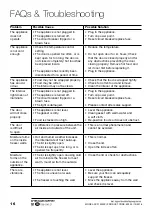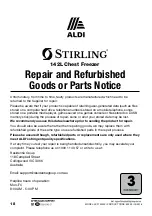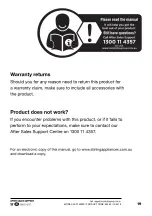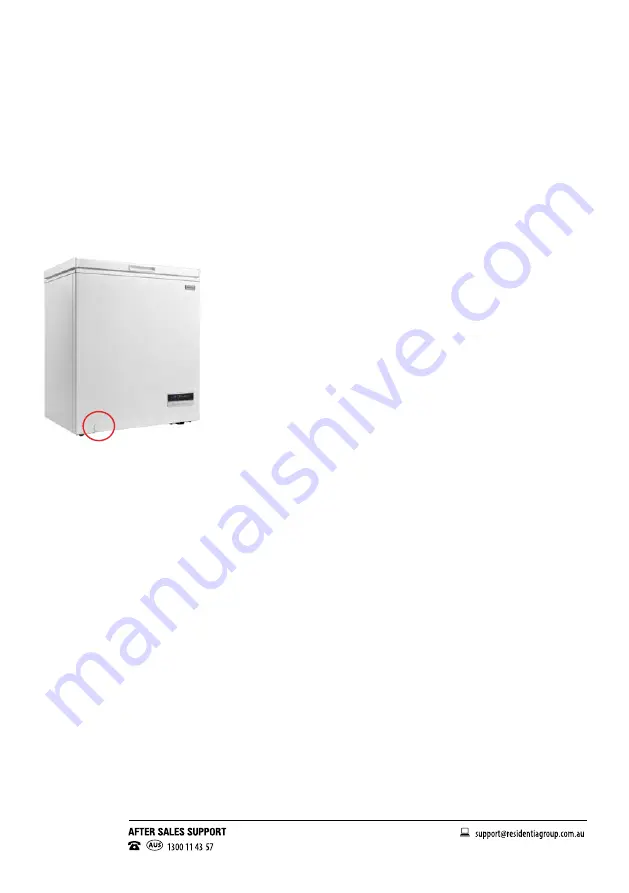
14
MODEL: SCF142WE | PRODUCT CODE: 62330 | 10/2018
Maintenance and Cleaning
Defrosting
The chest freezer requires manual defrost. For efficient operation and minimum energy consumption, defrost
the freezer compartment when the frost on the freezer walls is building up. Do not let frost build up to more
than 3–4mm thickness. For efficiency, choose a time when your stock of frozen food is low.
• Unplug the freezer and open the door. Remove the food and storage basket. (Keep any frozen food
temporarily in a fridge or cooler bag to keep defrosting to a minimum.)
• During defrosting, any ice and frost that has accumulated will melt into the freezer cabinet. To drain the
water, open the drainage hole (Fig. 2). When the ice softens, an ice scraper can be used to help speed up
the process.
Cleaning
WARNING
Before cleaning the appliance, make sure it is switched off and disconnected from the power supply.
Failure to do so can result in electric shock or injury.
• Wash the inside surfaces and the interior accessories with a damp, warm cloth moistened in a water and
baking soda solution. The solution should be about 2 tablespoons of baking soda to 1 litre of water. Rinse
and wipe dry with a soft cloth.
• Clean the outside of the unit with a damp, well wrung out cloth, keeping the area of the controls dry. Keep
the lid gasket (seal) clean.
•
Never use boiling water to accelerate defrosting as it may damage the plastic components.
• Regularly check the drain in the freezer for defrost water. If necessary, clean the drain. If the drain is
blocked, water will collect in the base of the appliance.
• After cleaning/defrosting, push the drain plug in and also re-plug the drain plug inside the freezer cabinet.
• After everything is dry, place appliance back into service.
• Allow approximately 1–2 hours for the cabinet to cool down again (depending on the length of time the
freezer was disconnected from the power).
WARNING
Never clean the unit with an abrasive, acid, oil or solvent based cleaning agent. Never use flammable fluids or
sprays for cleaning as the fumes from these substances can create a fire hazard or Explosion.
Fig. 2


